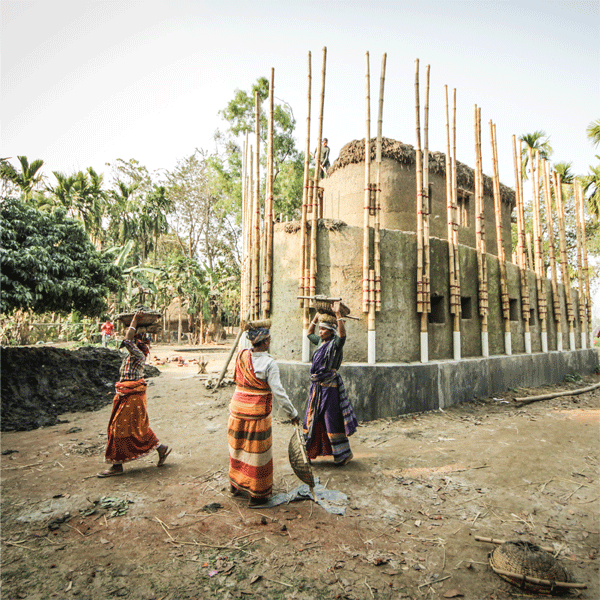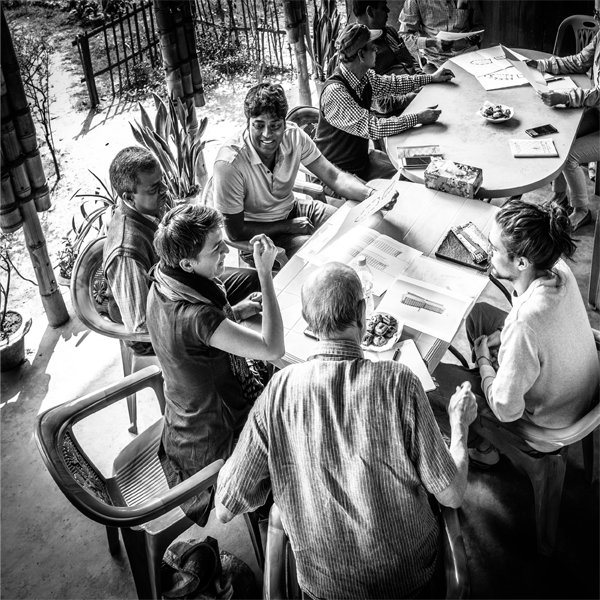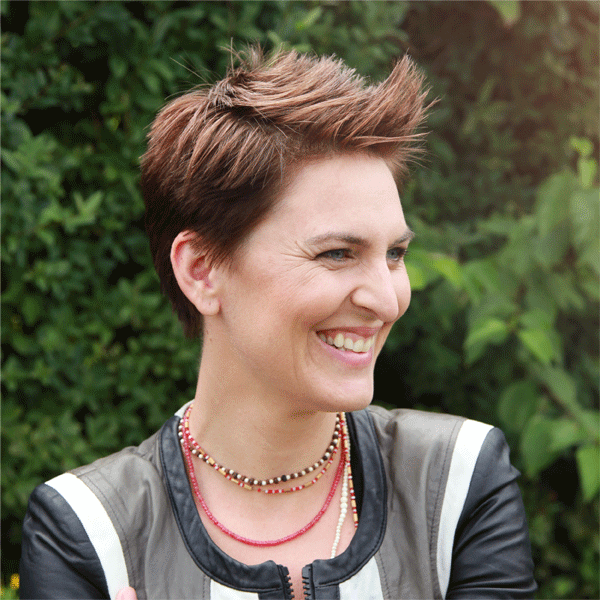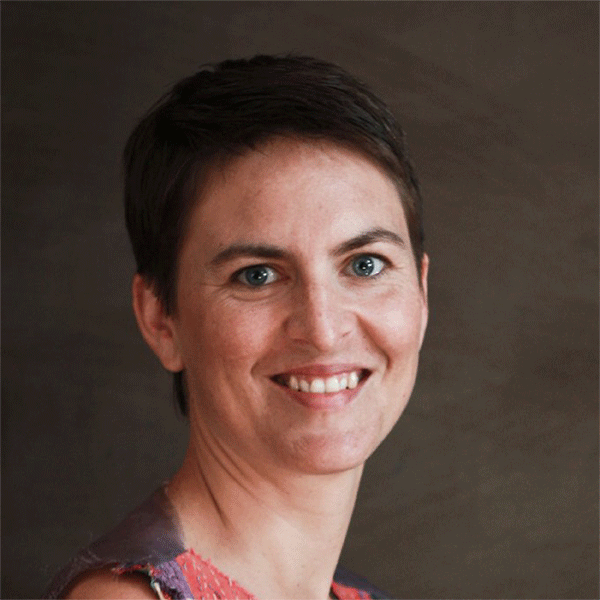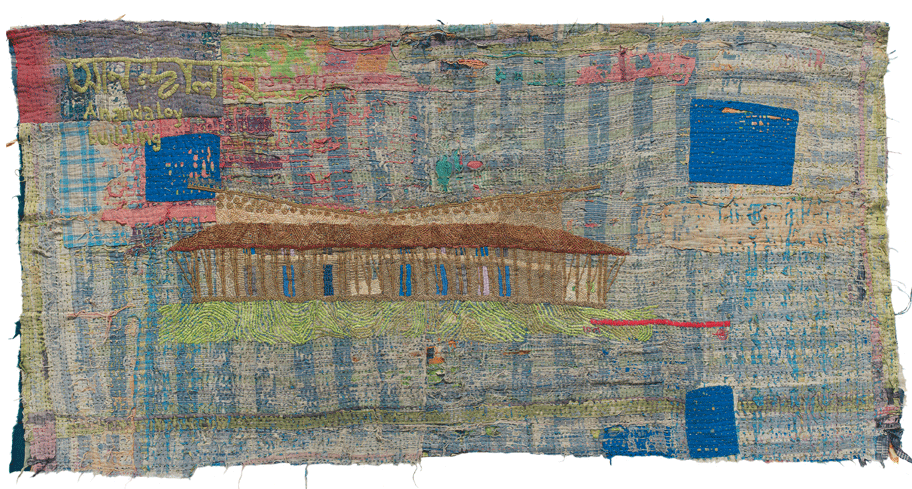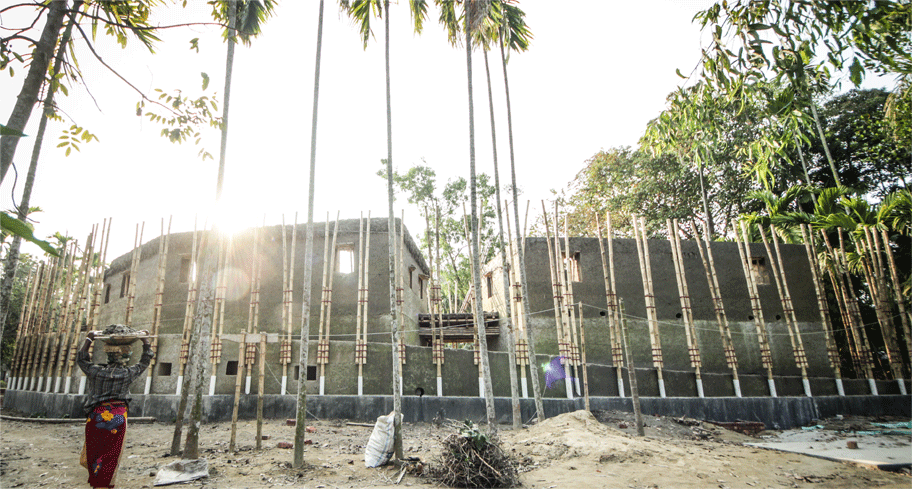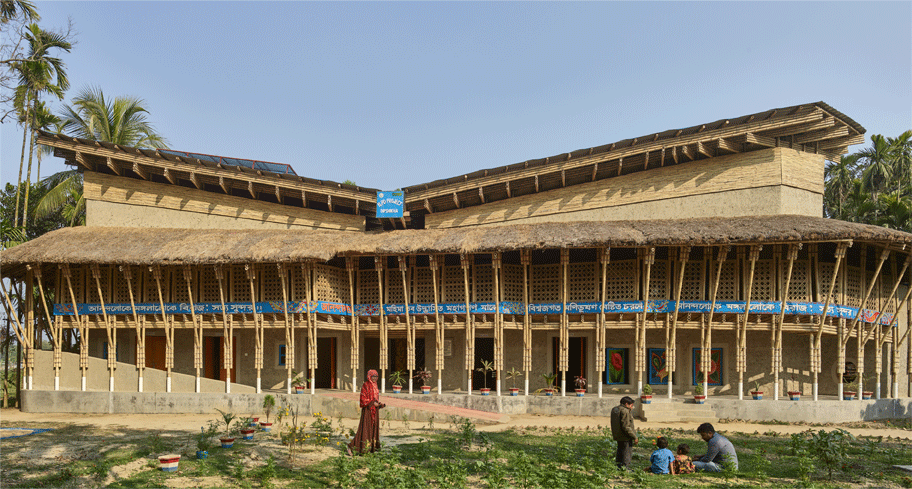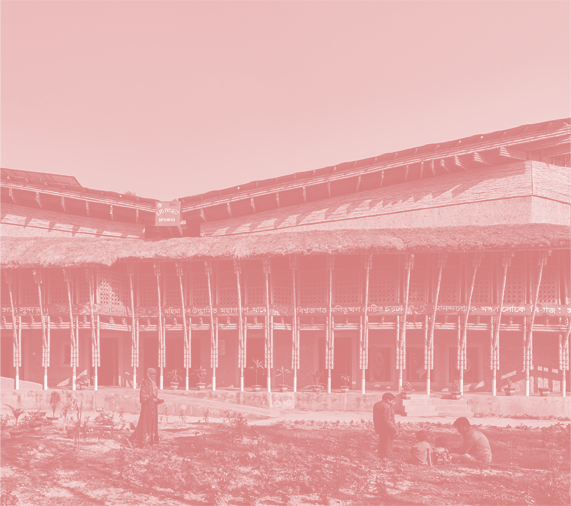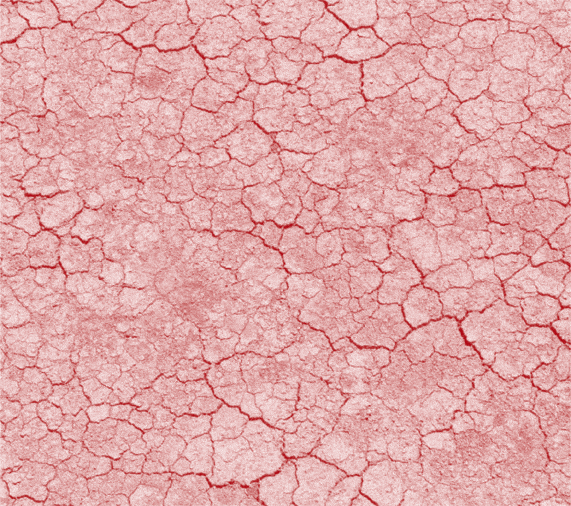Anna Heringer
Architecture in Favour of Life
2020 obal award winner
Anna Heringer on the project ‘Anandaloy’ in Rudrapur, Bangladesh, 2017-2020. The project is the winner of the OBEL AWARD 2020.
Surrounded by lush green paddy fields in northern Bangladesh stands a curving building in two storeys built out of mud and bamboo. The mud walls curve and dance, and a big ramp winds up to the first floor. Below the ramp are caves that provide either a fun place to move around or a quiet space if you need for a moment to feel protected and embraced.
The building is called Anandaloy, which means The Place of Deep Joy in the local dialect of Bangla/Bengali.
German architect Anna Heringer is behind the unconventional, multifunctional building that hosts a therapy centre for people with disabilities on the ground floor and a textile studio on the top floor producing fair fashion and art.
“I see myself very much as an architect but also as a social worker and as an activist.”
Celebrating diversity and inclusion
What I want to transmit with this building is that there is a lot of beauty in not following the typical standard pattern,” Anna Heringer explains.
Anandaloy does not follow a simple rectangular layout. Rather, the building is dancing, and dancing with it is the ramp that follows it around. That ramp is essential, because it is the symbol of inclusion. It is the only ramp in the area, and as the most predominant thing about the building, it triggers a lot of questions. In that way, the architecture itself raises awareness of the importance of including everyone. Diversity is something beautiful and something to celebrate,” she adds.
In Bangladesh, having a disability is seen as a big burden from god or as karma from a previous life. There is little awareness among people with disabilities that they can improve their situation through training, massage techniques, and technical equipment. The therapy centre helps them in this respect. Furthermore, having a place to go to, which is their own — but which is also not separate from other people and the functions located on the top floor — gives them a lot of dignity, according to Anna Heringer.
ly, as an architect, you build the vessel, and what goes on inside is not your business. But for us, it is very much our business,[/q] Anna Heringer says, adding:
The project pushes the boundaries of my work. I see myself very much as an architect but also as a social worker and as an activist.
Women and empowerment
Dipdii Textiles, located on the first floor of the Anandaloy building, is a clothes-making project for local women that Anna Heringer and Veronika Lang launched with the NGO Dipshikha to support local textile traditions and to improve work opportunities in the village. As a woman in rural Bangladesh, you have few work opportunities, and many women move to the city to live and work in factories under very stressful and inhumane living conditions.
We wanted to give the women a chance to earn their own living in the village. We have to bring the work where the people are, where they can make use of their own ressources, building their own houses with their hands, growing their own food, and taking care of their families. They lose all this independence in the city. So the top floor of Anandaloy is also very special to me, because besides the architecture, we are also responsible for the programme, the content. Normally, as an architect, you build the vessel, and what goes on inside is not your business. But for us, it is very much our business,
Anna Heringer says, adding:
The project pushes the boundaries of my work. I see myself very much as an architect but also as a social worker and as an activist.
Building with mud
The architecture of Anandaloy explores the plastic abilities of mud. With a particular mud technique called “cob”, no formwork is needed, which means that curves are just as easy to make as straight walls. With its curves and complex geometry, the Anandaloy building breaks out of the mold.
It is important to me to show that it is possible to build a modern two-storey house with simple resources. Mud is not just dirt — it is a real building material of high quality that you can use to build very exact structures — not only small huts but also large engineering structures and even public buildings. It is our creative task to take an old material and make something modern and appropriate to contemporary uses, needs, and aspirations. Mud buildings can be healthy, sustainable, humane, and beautiful,
says Anna Heringer.
Working with mud also makes it possible to include users and clients directly in the building process.
Clay is a material that truly enables inclusion. We had everyone working on site: young and old, healthy and with disabilities, men and women. It was wonderful to me that the workers did the structure on their own. Normally, they would wait to be told what to do, but with the construction of Anandaloy, they were completely engaged in it, finding their own solutions. It is not an easy building with its difficult geometry, but they did it, and when they showed me around the site, they were radiating with pride. For me, that is the biggest reward: when the architect is no longer needed, and the techniques and know-how are embedded locally,
she says.
The Anandaloy construction site was managed by the local contractor, Montu Ram Shaw, and the team of mud and bamboo workers from the village, including people with disabilities. Because mud is for free, and the bamboo was bought from local farmers, the biggest part of the budget remained within the community.
Local materials and global creativity
The architecture of Anandaloy is a result of many years of work and projects, through which Anna Heringer has developed her personal philosophy of architecture.
With this building, everything comes together: local materials, local energy sources, and global creativity. First of all, it is important to me to show that you can create something out of existing materials. The material below our feet and the things that grow around us are enough to make something beautiful. Secondly, Anandaloy is completely run by solar energy, and human labour and craftsmanship were also very important sources of energy in the project. And finally, inspiration for the design came from Bangladesh but also from beyond. For example, the façade has a Vienna weaving pattern, because the workers loved that design, and it was easy to apply on the local bamboo. I believe that creativity should not be limited, but that knowledge and know-how should travel and be accessible everywhere,
she says.
And, importantly, Anandaloy is built to someday return to dust.
I want to make decomposable buildings; I don’t want to leave waste behind. We can never foresee what the coming generations need — but what I really want to remain is the knowhow,
she says.
Architecture in favour of life
Anna Heringer believes that architecture is a tool to improve lives:
I think there is a lot of good-looking architecture around, but I think that good-looking architecture is not enough. It has to bring meaning to people. And of course add to a healthy planet and to social justice, and that is what I am trying to do with my work.
This is why the OBEL AWARD is so important to her, she says:
I am so grateful for the OBEL AWARD. When I talk to my students, they say: ‘How can I make a living making ethically sound and sustainable architecture?’ I always tell them: ‘Just follow your heart. If you do something that is in favour of life, of social justice, a healthy planet, just trust that life will also support you on your way.’ To receive this money helps me to go on in that line, what my heart tells me.
Project details
Timeline: 2017-2020
Location: Rudrapur Village, Dinajpur, Bangladesh
Typology: Community centre, Workshop
Size: 253 m2
Creator / Team: Studio Anna Heringer
Client: Dipshikha Bangladesh
